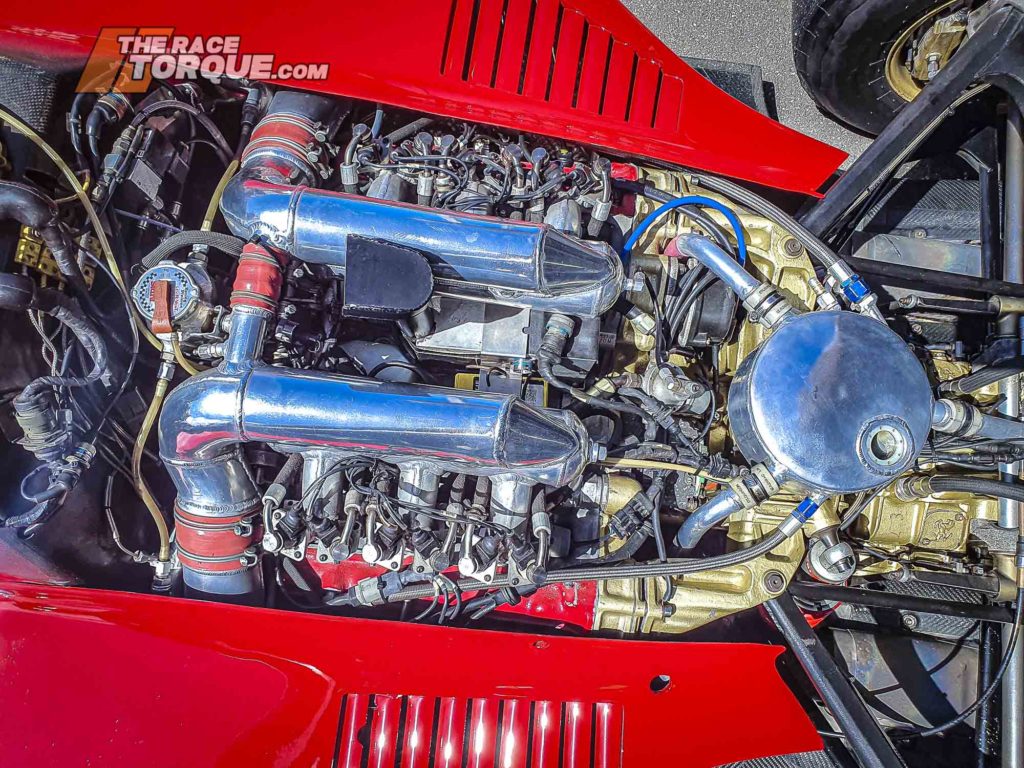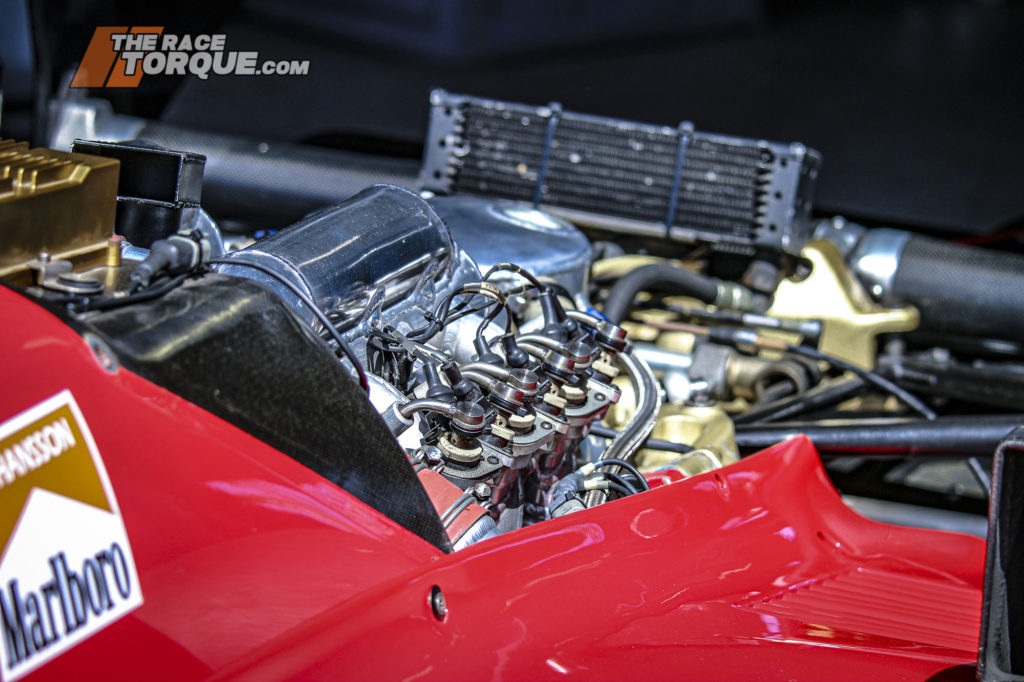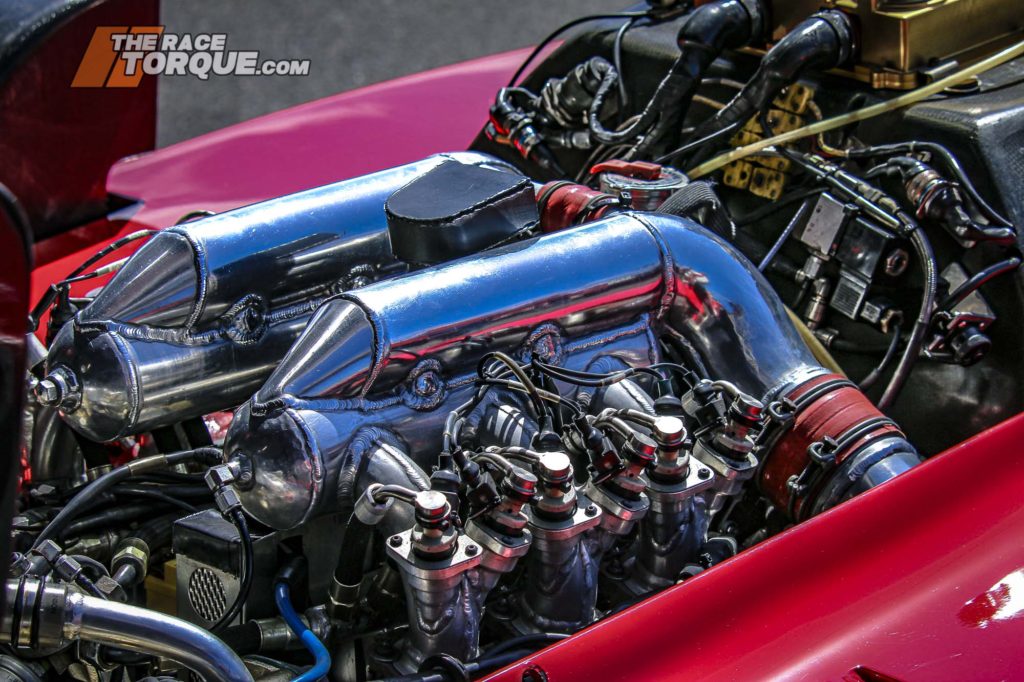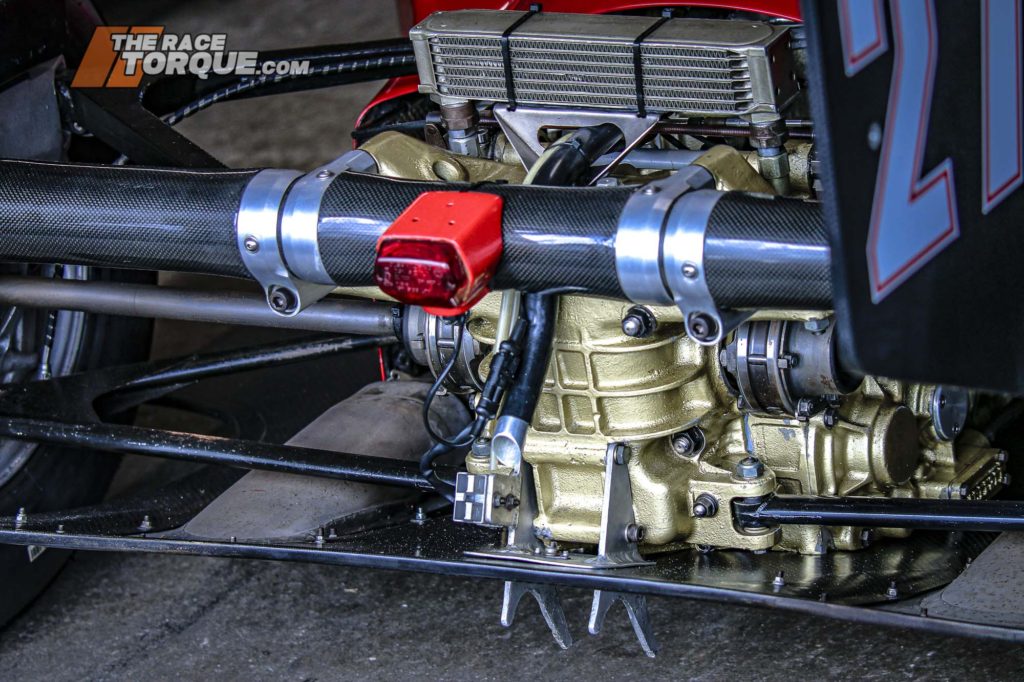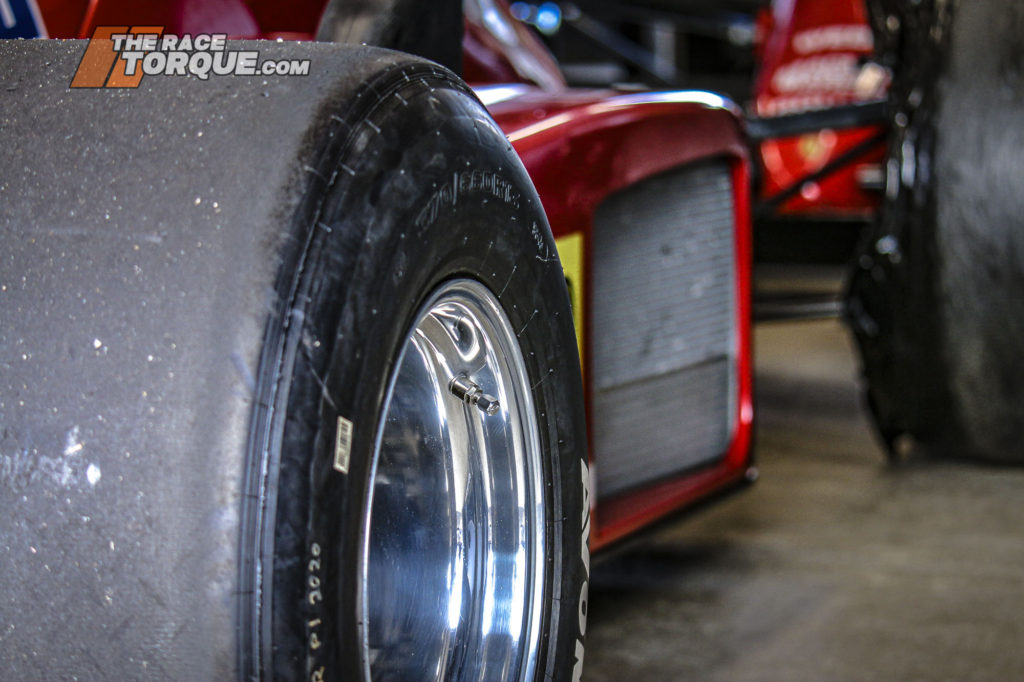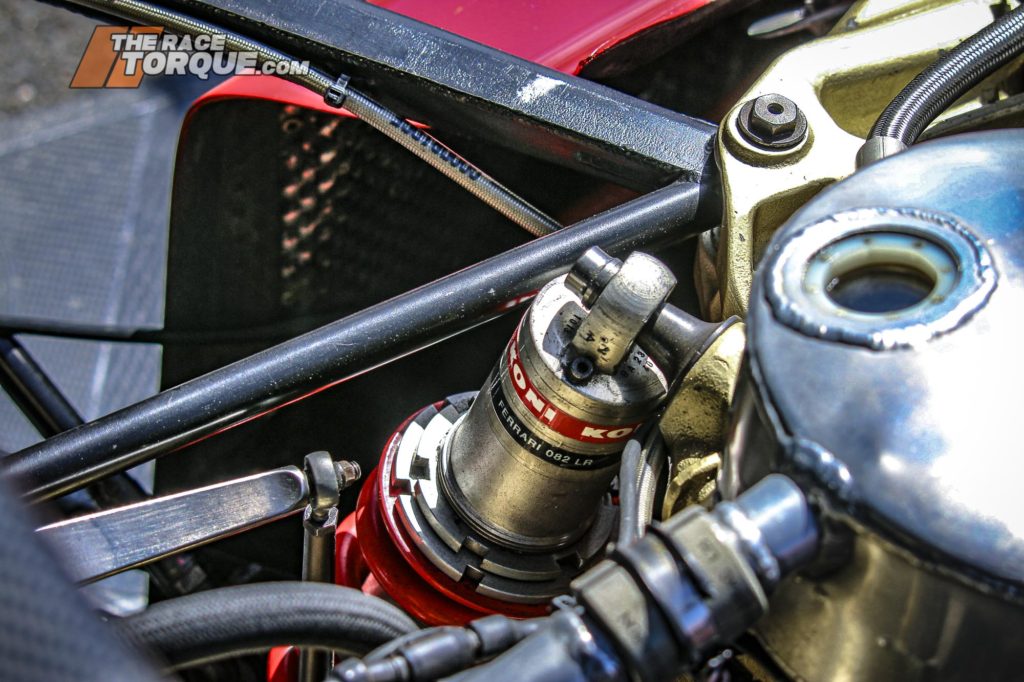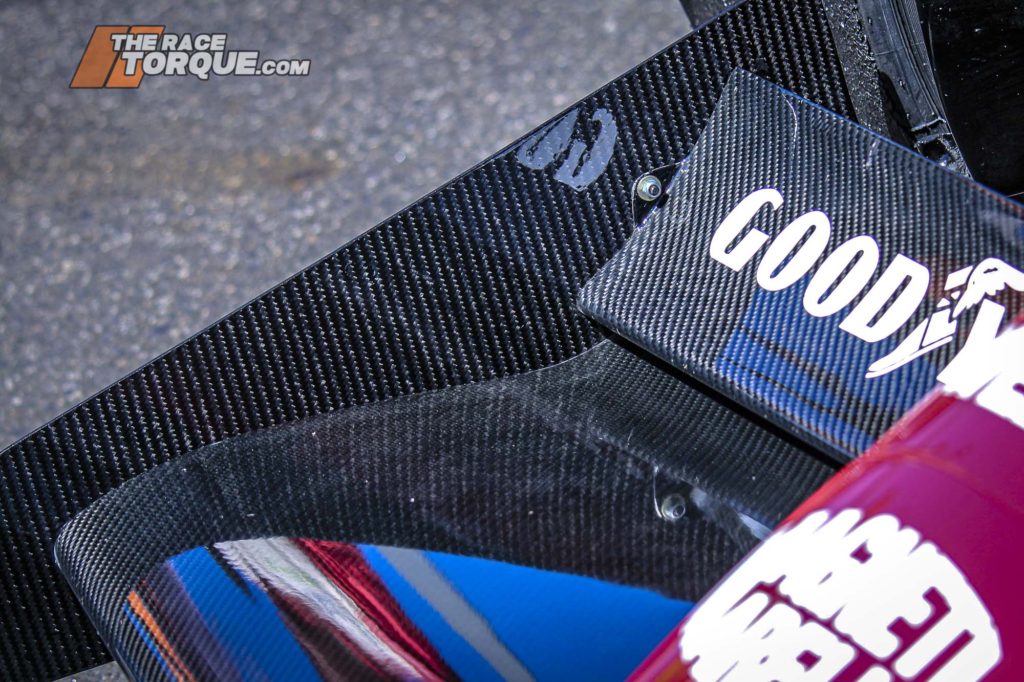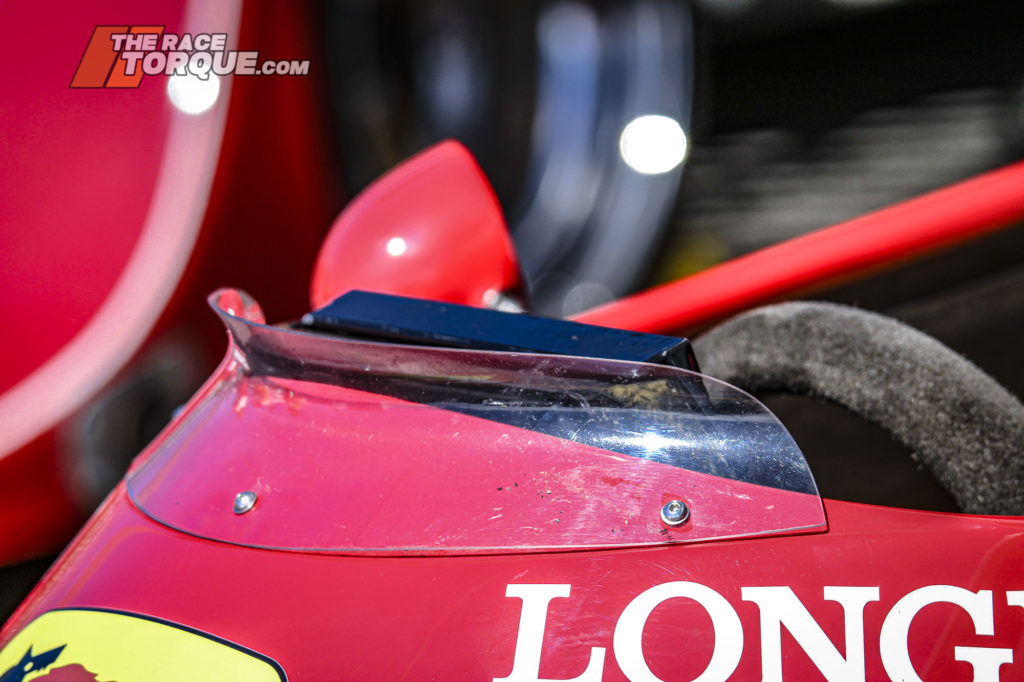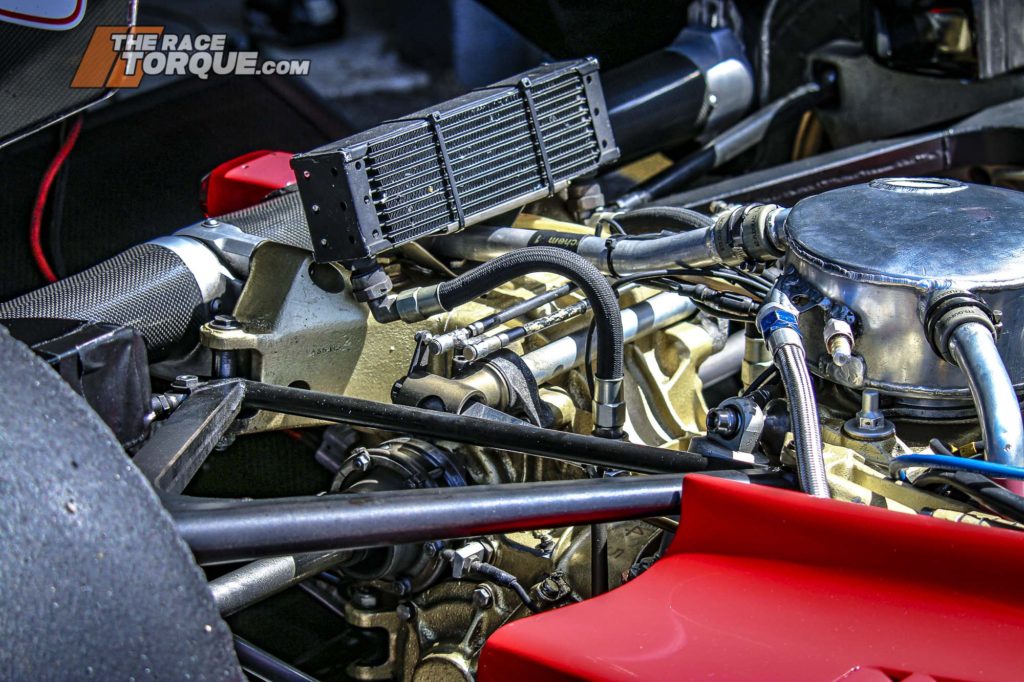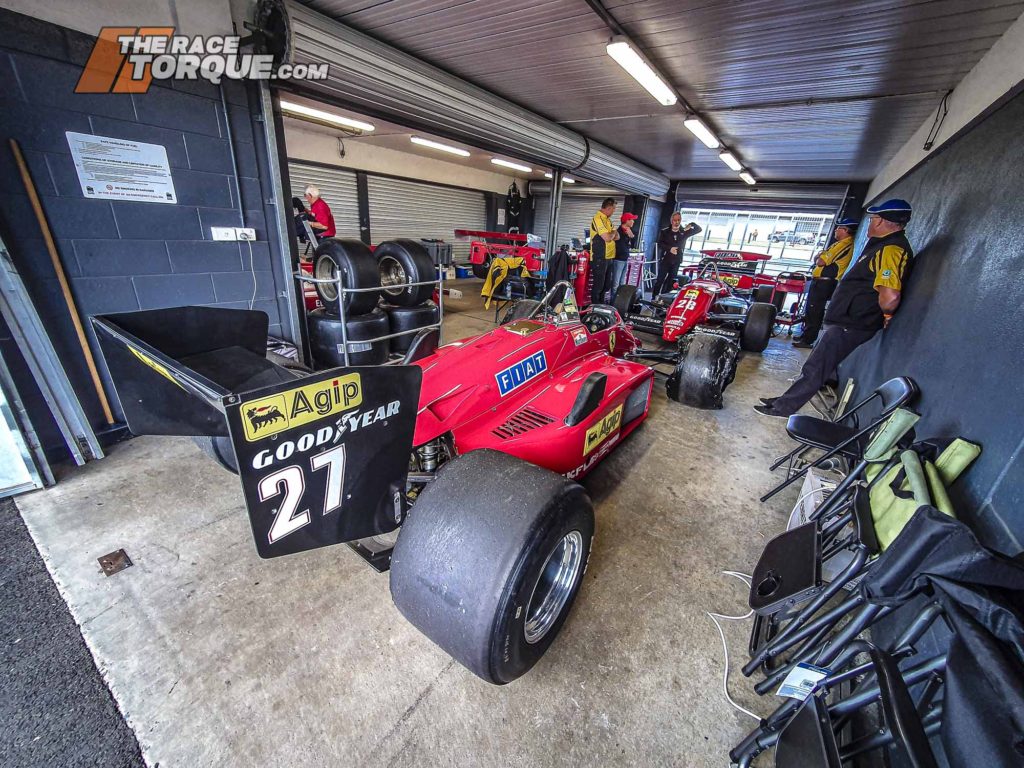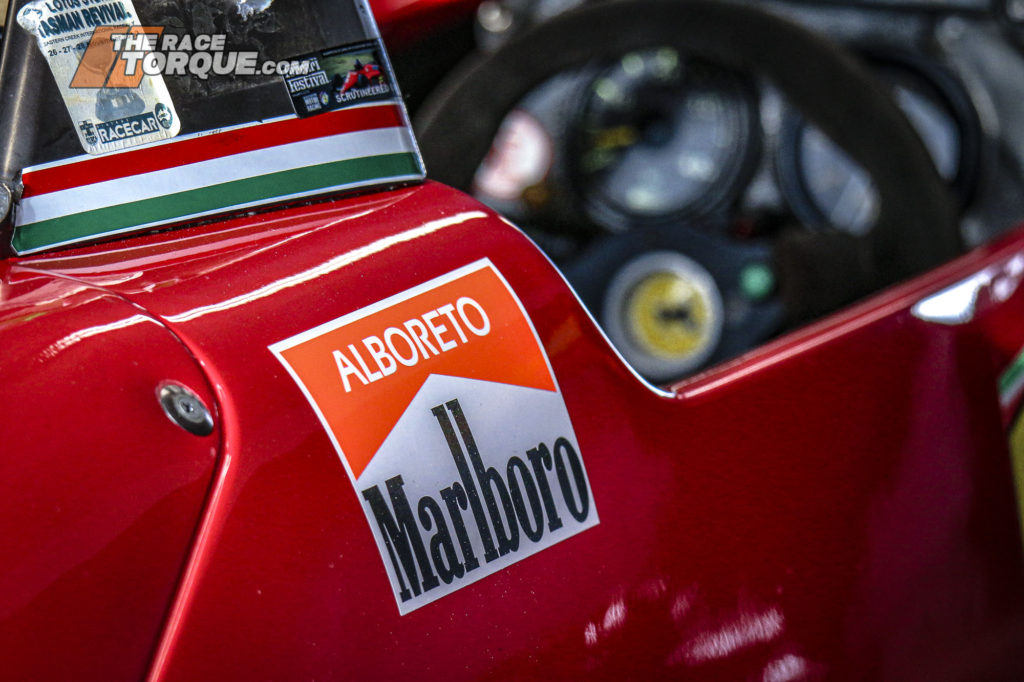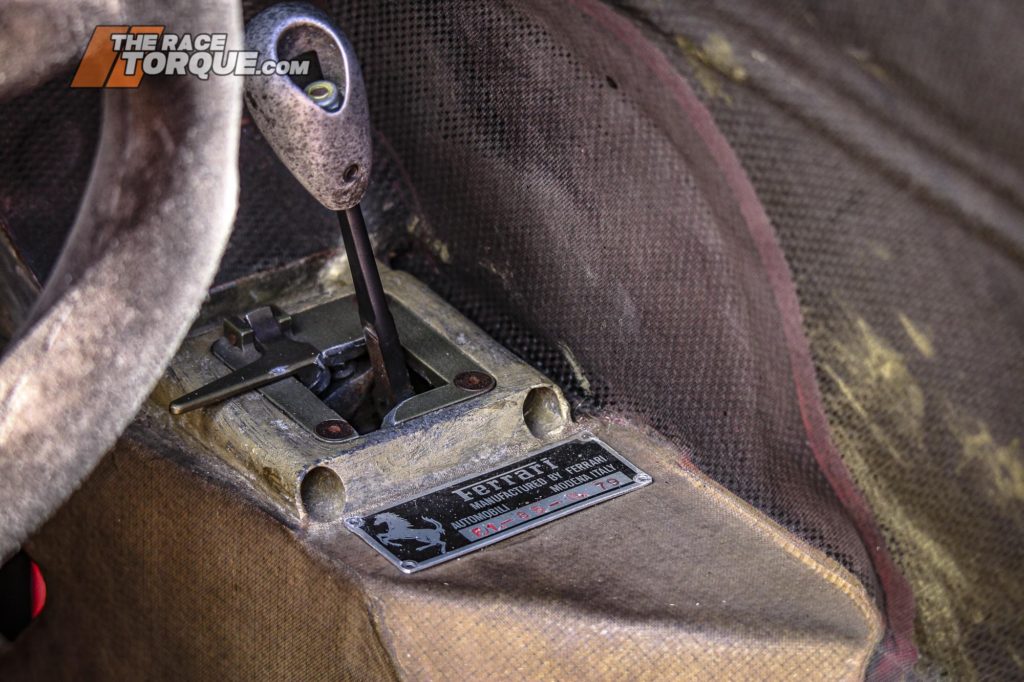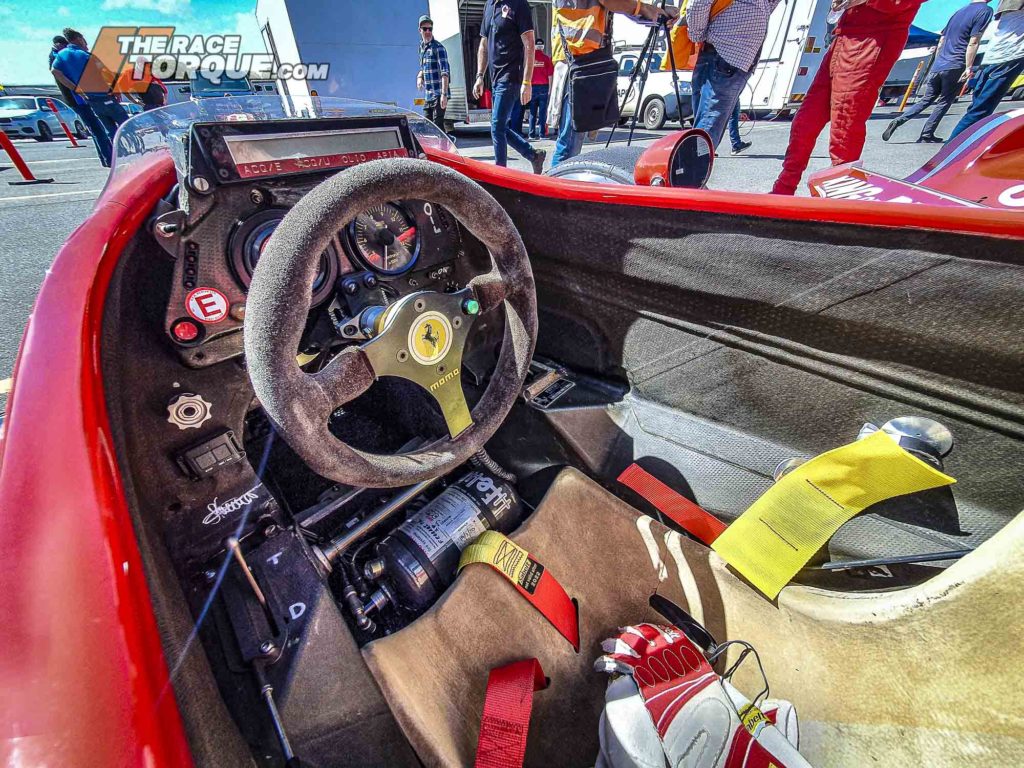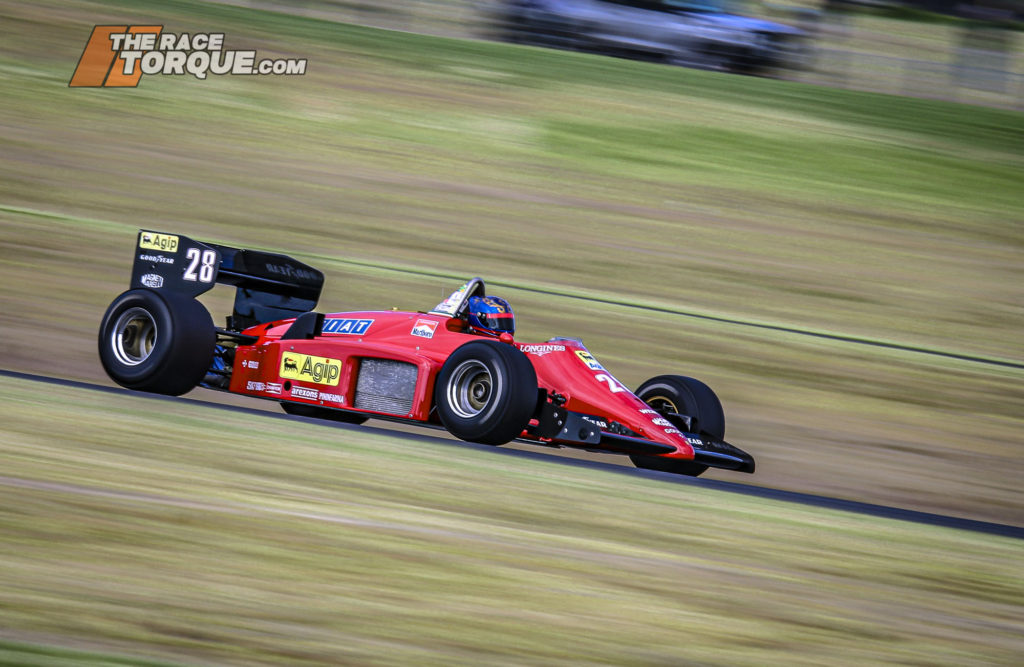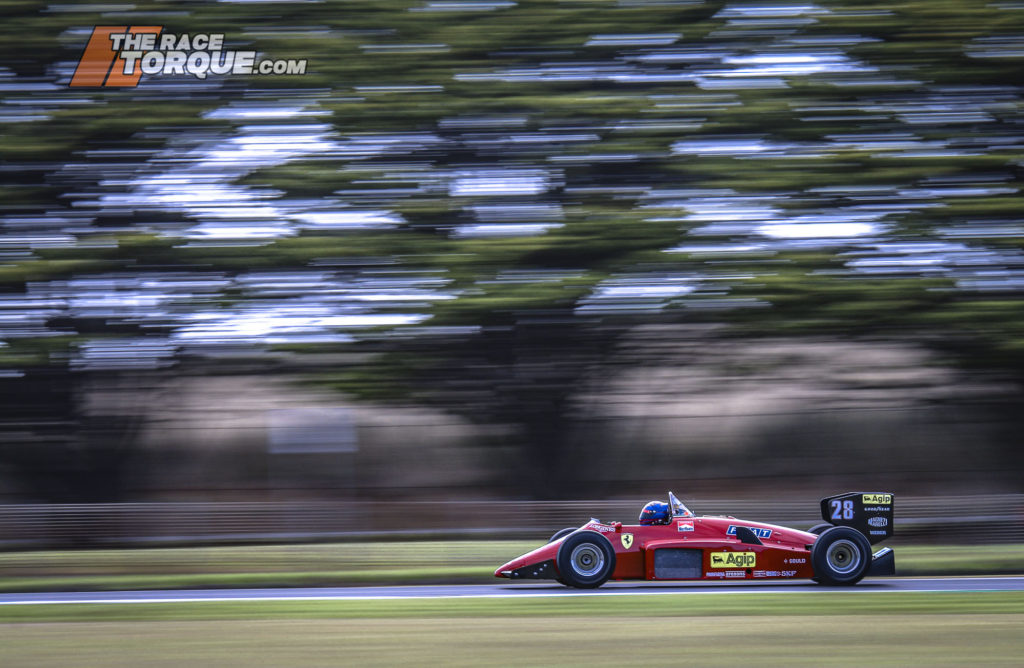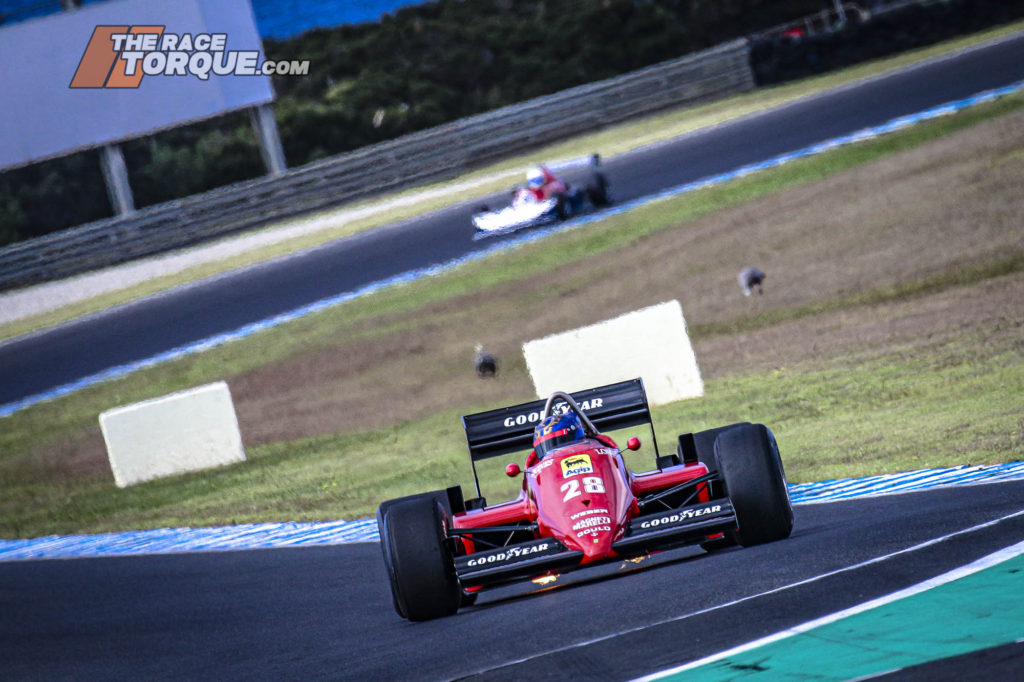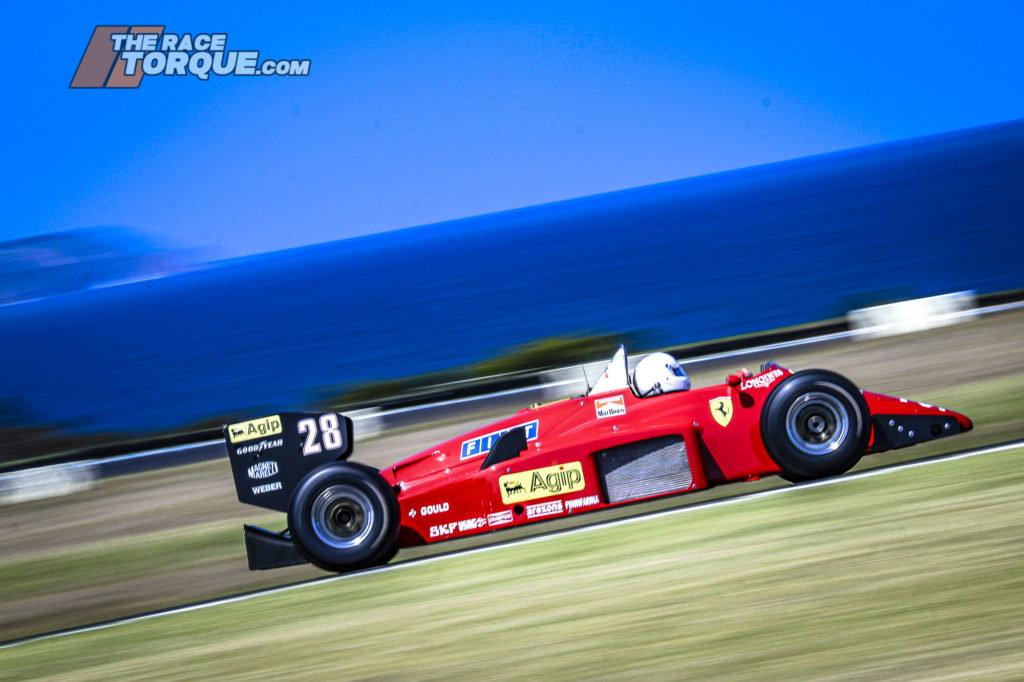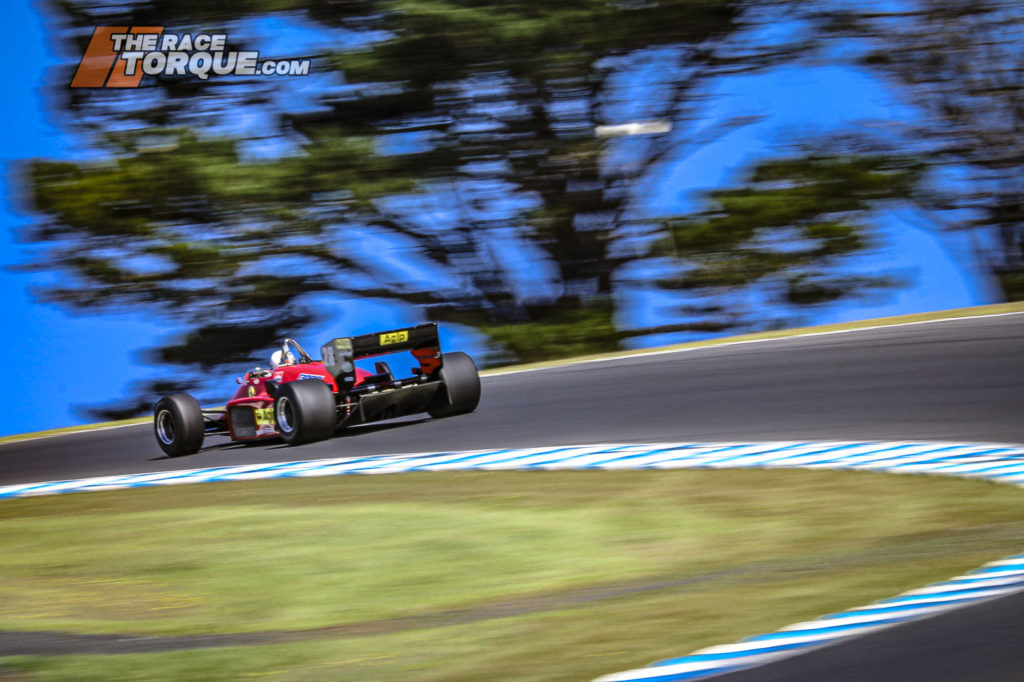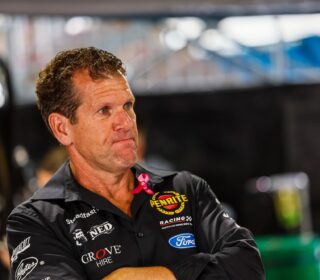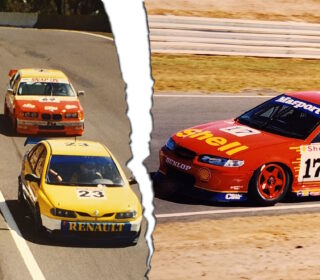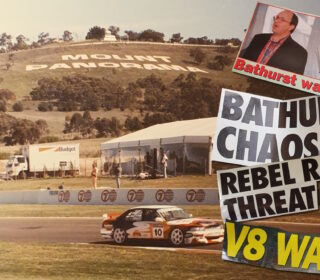UP CLOSE: Australia’s Ferrari F1 Twins
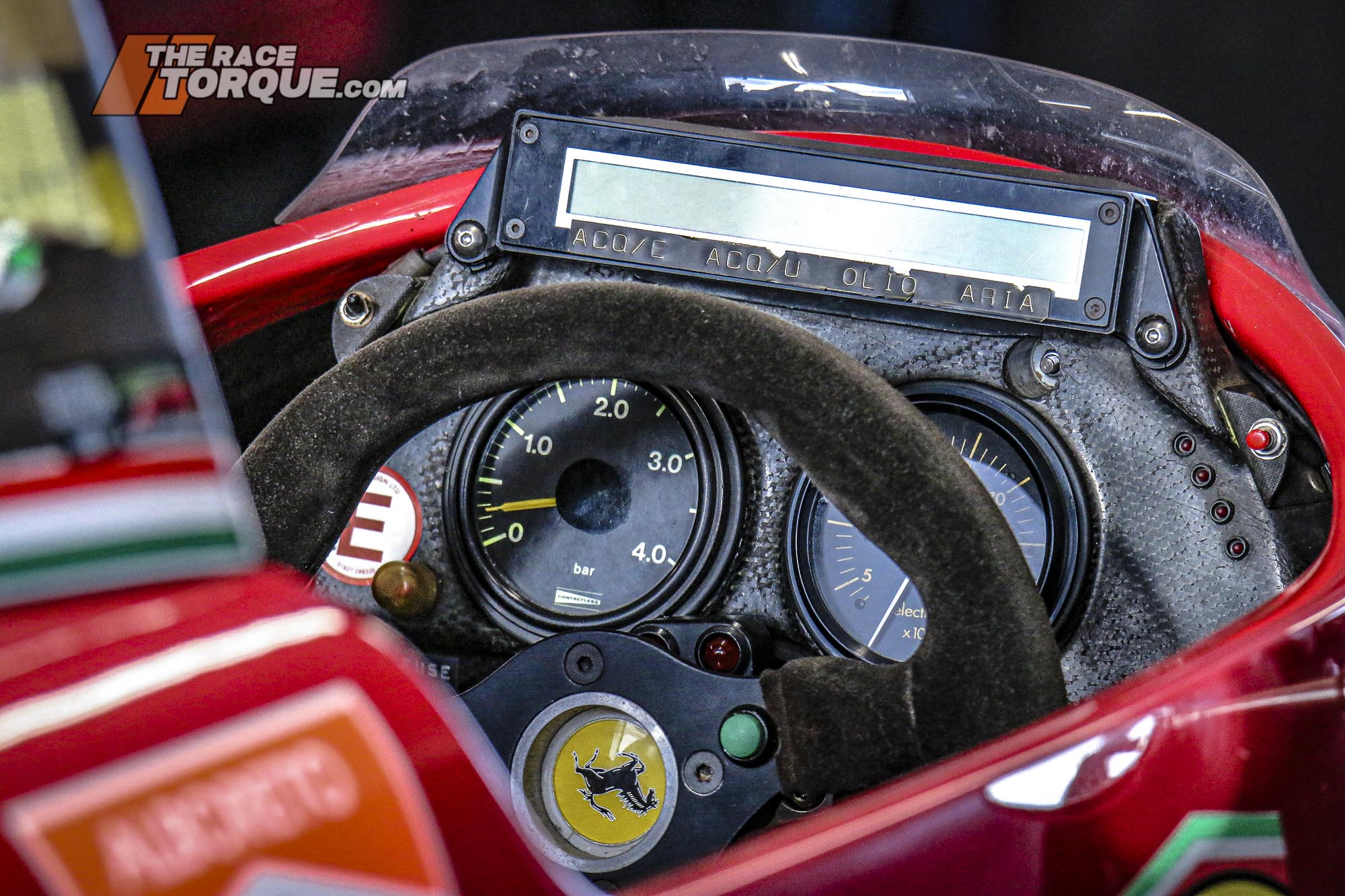
Nothing quite stirs the emotions of race fans quite like the screaming F1 cars of the 1980s, especially so if the machine is branded with a Prancing Horse.
As we have examined here previously on The Race Torque, Australia is home to numerous classic Formula One examples, with Guido Belgiorno-Nettis the custodian of two of the best: matching Ferrari 156/85s.
All told, it was a highly successful model for the Maranello marque, claiming second in the 1985 Constructor’s Championship to McLaren, with Michele Alboreto leading the Driver’s title during the mid-part of the year before settling for second at season’s end, with teammate Stefan Johansson seventh in the final run down.
The iconic number 27 and 28 racers were present at the Phillip Island Classic earlier this year, where The Race Torque got up close and personal with the pair of rosso corsa beauties.
The Heart of the Beasts
The 1985 F1 season featured a real mixed bag of power plant configurations.
From the naturally aspirated 3 litre Ford Cosworth DFY V8 (which was on its last legs), to the inline four-cylinder turbos from BMW, Hart and Zakspeed, to Alfa Romeo’s turbo V8, the bulk of the field, including Honda, Motori-Moderni, Renault, TAG and Ferrari, opted for 1.5 litre V6 turbos.
Renault changed the game in 1977 when they introduced forced induction to the sport, with tremendous power achievable from a relatively small package, and once reliability was built into them, they became the norm.
Ferrari jumped on the turbo bandwagon in 1981, although at the time, the marque experimented with a pressure wave supercharger system to no avail.
Adding to this, prior to the 1985 season, the outfit also flirted with a turbocharged inline-four design, which was also benched. Innovation was alive and well, even if it never made it to the race track.
The heart of the engine featured a 120-degree vee angle (switching to a steel block for ’85), the twin KKK brand turbos, which for 1985 were mounted outside of the vee, and with the intake on the inside, the profile of the engine was kept low, allowing for sleek aerodynamic lines over the tail of the car.
Adding to the permutations of configurations tried out under the engine cowl, during the season a quad-turbo combination was tested at Fiorano, but never raced.
Overall, it was the highest revving engine in the field (alongside the McLaren’s TAG) at 12,000rpm, which with 4.6 bar of boost in qualifying trim bashed out 940hp, while 3.6 bar would provide 780hp in race trim.
With the FIA limiting fuel tanks to only 220 litres in 1985, boost had to be significantly wound back for the race in the name of fuel efficiency, let alone to give any chance of reliability.
The 1986 version, however, proved to be the most powerful of all time, producing a staggering 1,200 to 1,350hp in qualifying tune, with the arms race curtailed in 1987 with the addition of FIA mandated pop-off valves.
Ultimately, Ferrari would run with the V6 turbo configuration through to the 1989 Ferrari 640, with Nigel Mansell joining Gerhard Berger and V12 power.
The Importance of Detail
With a background at March, Hesketh, Wolf and Fittipaldi, Dr Harvey Postlethwaite joined the Scuderia Ferrari in early 1981, an outfit renown for top engines but a lack of chassis refinement.
Under his watch as Technical Director, the team claimed the Constructor’s Championship in the tumultuous 1982 season, backed it up in ’83, and finished second in ’84.
That 1982 season’s 126C2 saw Ferrari introduce its first proper complete monocoque chassis, with the evolution continuing into 1985 with the application of a Kevlar and carbon fibre tub, a practice first introduced to Formula 1 by McLaren in 1981.
Suspension front and rear featured double wishbones, pull-rod coil springs fitted over Koni shocks and anti-roll bars.
The cars had a 2.6m wheelbase, roughly a full metre shorter than the current day F1 racers, and an overall length of 4.3m, 1.4m shorter than the contemporary machines.
There has also been significant fattening of the cars over the past 36 years; the 156/85 tipped the scales at 548kg (including oil and water), some 210kg lighter than the current day hybrid kit.
Notably, the 1985 model was the first Ferrari F1 car to be entirely designed with CAD/CAM software.
At the time, it was noted as the best looking car of that season, a point hard to argue.
In the Hot Seat
Over the course of this in-depth section, we will analyse the various functions of the steering wheel: turning not only left, but also right, with a radio button, in case you felt the need to talk to someone.
Instrument wise, drivers could see an analogue turbo-boost gauge is on the left, with engine revs on the right, while a small display above the wheel; full-electronic dashes wouldn’t be common until 1988.
The drivers had at their disposal five forward gears fitted in a transverse-mounted transmission mated to a ZF limited-slip diff, with Ferrari moving to six-cogs the following season, while stopping power was provided by four-pot Brembo callipers, SEP carbon rotors and titanium pads.
As for the hot seat itself, it continued to be placed very much forward in the design in ‘85, with the driver being moved progressively backwards within the chassis in future years.
Success and Failure
In the end, nine Ferrari 156/85 chassis were constructed, with sources reporting at least five were used in racing, with all bar one still in existence to this day.
Autocourse at the time noted that chassis numbers 079 through 082 were quite similar, while 083-087 were progressions, with the examples found in Australia being 079 and 082.
Chassis 079 was the first to land in Australia in 1996, acquired from the collection of Alboreto’s patron, Count Gughi Zanon di Valgiurata, who was gifted the car at the end of the ’85 season by Enzo Ferrari.
Count Zanon in fact had a behind the scenes role in the career and fortunes of several Grand Prix identities, including Ronnie Peterson, Lella Lombardi, Frank Williams, Ken Tyrell and Ayrton Senna, amongst others.
Alboreto utilised this particular chassis in a total of nine races of the 16 contested in ‘85, with a string of top results.
After Mansell’s Lotus won the start at the season-opening Brazillian Grand Prix, Alboreto led for a chunk of the early going, before finishing second to McLaren’s Alain Prost.
Next up in Portugal, in sodden conditions, Ayrton Senna cleared out for a lights to flag win in his Lotus, the first of his career. Alboreto finished second in chassis 079, over a minute off the pace, although the only other car on the lead lap.
The podium run for the combination concluded at the third round at San Marino, although they were running second when electrical issues sent the car to the pits for service. Returning to the track with fresh Goodyears, Alboreto set the fastest lap of the race en route to sixth.
The chassis finally returned to being a top-four runner in Austria in August.
The Italian was in the box seat to claim the Driver’s title following wins in Canada and Germany, until a string of five straight non-points paying results was rounded out by four consecutive non-finishes (caused by clutch failure, two turbo troubles and a transmission fault), eventually finishing second in the points to Prost.
Seeking spare parts, Belgiorno-Nettis then purchased the complete chassis 082 in 2006, a machine that was only campaigned in limited events.
Car 28 was initially piloted by Rene Arnoux in ’85, however, he parted company with the team in mysterious circumstances following a fourth-place finish in the season opener at Brazil.
From there, Swede Johansson took over driving duties, including chassis 082, later sharing the podium with Alboreto in both Canada and Detroit.
Following on from the ‘85 model, Ferrari encountered a lean spell in the sport, being winless through to the penultimate round of the 1987 season in Japan, claiming fourth in both the ’86 and ’87 Constructor’s titles.
For the record, Belgiorno-Nettis registered a win at the Phillip Island Classic – proving there is still plenty of prancing left in these horses…



